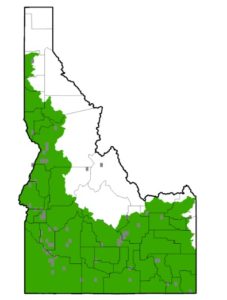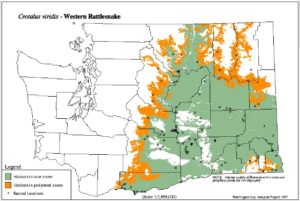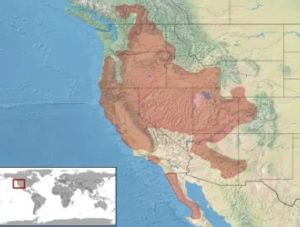
ASOTIN, WA – Asotin County medics were called to the Asotin Boat Launch at around 1:09 p.m. this afternoon for a reported rattlesnake bite. The victim, reportedly a male in his early 40s, was suspected to have a bite to the back of his leg. Area residents should be aware that rattlesnakes are coming out of their dens now that the weather is warming up.
Asotin County Fire District #1 Chief Noel Hardin says if you receive a rattlesnake bite, your best bet for a quick recovery includes:
- Call 911
- Clean the bite area
- Take off rings, watches, etc.
- Keep the bit below the heart level
- Get to a hospital as soon as possible
Left untreated, a rattlesnake bite can lead to organ failure and death in two to three days, according to Healthline.
“The venom from the majority of rattlesnake bites will damage tissue and affect your circulatory system by destroying skin tissues and blood cells and by causing you to hemorrhage internally. Most rattlesnake venom is composed mainly of hemotoxic elements,” Healthline says.
If you’re bitten by a rattlesnake, you may notice one or two puncture marks made by the snake’s large fangs.
“You’ll usually experience some pain, tingling, or burning in the area where you’ve been bitten. There may also be some swelling, bruising, or discoloration at the site,” according to Healthline.
Other common symptoms include:
- numbness in the face or limbs
- lightheadedness
- weakness
- nausea or vomiting
- sweating
- salivating
- blurred vision
- difficulty breathing
In addition, Healthline says do not attempt the following methods:
- Don’t cut the wound, as this doesn’t help and you could cause an infection.
- Don’t try to suck the venom from the wound, as you then introduce the venom to your mouth as well as introduce the bacteria from your mouth to the wound.
- Don’t use a tourniquet or apply ice or water.
The definitive treatment for snake venom poisoning is the administration of antivenin according to multiple sources.
The Western Rattlesnake is common and widespread in eastern Washington, Idaho, and Oregon. However, numbers in many areas have declined because of habitat loss, excessive hunting at den sites, and destruction of den sites according to the Washington Department of Fish & Wildlife.
WDFW says rattlesnakes are active during the day when temperatures are moderate but switch to nocturnal activity during the hottest months of the year. When not active, they shelter under shrubs and rocks.
They emerge from their overwintering sites (hibernacula or dens) in April with activity limited to the vicinity of the overwintering site for two to three weeks. They then disperse to their summer foraging areas.
Reproduction takes place in the spring near the den site when they emerge from hibernation. Females give birth to as many as 25 live young, known as “snakelets.”
Adults return to the overwintering sites starting in late September, although activity may continue until late October depending on location and temperatures.
- Other common names of this species include black rattlesnake, Arizona diamond rattlesnake, black diamond rattlesnake, black snake, California rattlesnake, confluent rattlesnake, diamond-back rattlesnake, Great Basin rattlesnake, Hallowell’s rattlesnake, Missouri rattlesnake, Oregon rattlesnake, Pacific rattler, rattlesnake, southern rattlesnake, western black rattlesnake, western rattler, and north Pacific rattlesnake. (Animalia)




